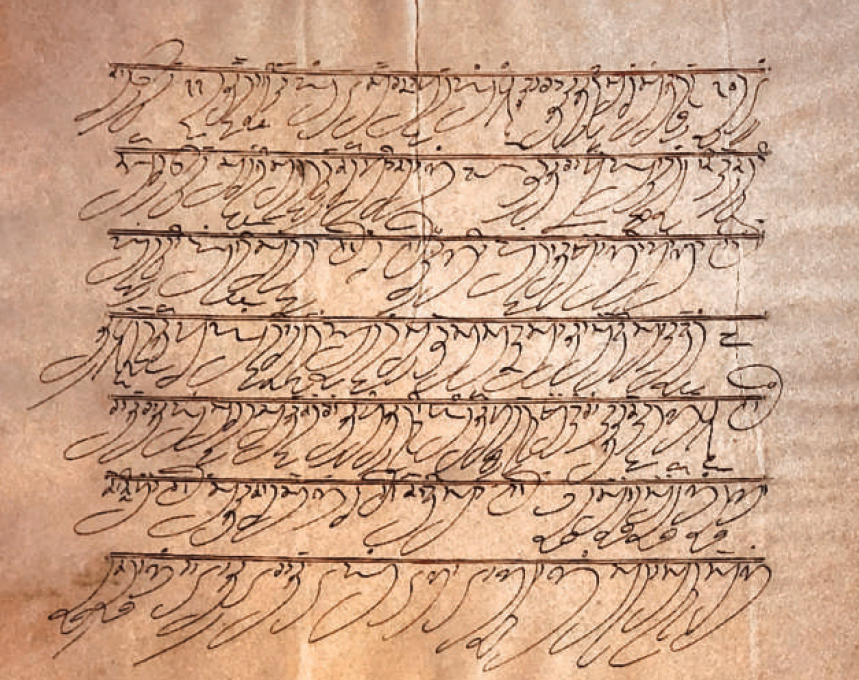Chandi Charitar II on:
[Wikipedia]
[Google]
[Amazon]
''Chandi Charitar II'' or ''Chandi Charitar Duja or Ath Chandi Charitar Likhyate'' (), is the 5th chapter of the Dasam Granth, whose authorship is generally attributed to
/ref> The plot of the text is based on the

Guru Gobind Singh
Guru Gobind Singh (; born Gobind Das; 22 December 1666 – 7 October 1708) was the tenth and last human Sikh gurus, Sikh Guru. He was a warrior, poet, and philosopher. In 1675, at the age of nine he was formally installed as the leader of the ...
.Dasam Granth - An Introductory Study/ref> The plot of the text is based on the
Markandeya Purana
The ''Markandeya Purana'' (; IAST: ) is a Sanskrit text of Hinduism, and one of the eighteen major Puranas. The text's title Markandeya refers to a sage in Sanatana Dharma, who is the central character in two legends, one linked to Shiva and oth ...
,Macauliffe, Max Arthur (28 March 2013). ''The Sikh Religion: Its Gurus, Sacred Writings and Authors, Volume 5''. Cambridge University Press. pp. 80, 81. much like the previous Chandi Charitar I.Chandi Di Vaar : Jeet Singh Sital
A retelling of the story of the Hindu goddess, Durga
Durga (, ) is a major Hindu goddess, worshipped as a principal aspect of the mother goddess Mahadevi. She is associated with protection, strength, motherhood, destruction, and wars.
Durga's legend centres around combating evils and demonic ...
again in the form of Chandi
Chandi (, ) or Chandika () is a Hindu deity. Chandika is a form of goddess Durga. She shares similarities with the Goddess Chamunda, not only in name but also in attributes and iconography. Due to these similarities, some consider them to ...
; it again glorifies the feminine with her fighting the war between good and evil, and in this section she slays the buffalo-demon Mahisha, all his associates and supporters thus bringing an end to the demonic violence and war.
Overview
This composition deals with themes of battle and war. Its authorship is generally and traditionally attributed toGuru Gobind Singh
Guru Gobind Singh (; born Gobind Das; 22 December 1666 – 7 October 1708) was the tenth and last human Sikh gurus, Sikh Guru. He was a warrior, poet, and philosopher. In 1675, at the age of nine he was formally installed as the leader of the ...
. This composition was written in Braj
Braj, also known as Vraj, Vraja, Brij or Brijbhumi, is a region in India on both sides of the Yamuna river with its centre at Mathura-Vrindavan in Uttar Pradesh state encompassing the area which also includes Palwal, Ballabhgarh and Nuh in ...
at Anandpur Sahib
Anandpur Sahib, also referred simply as Anandpur (), is a city in Rupnagar district (Ropar), on the edge of Shivalik Hills, in the Indian state of Punjab. Located near the Sutlej River, the city is one of the most sacred religious places in Si ...
, Punjab
Punjab (; ; also romanised as Panjāb or Panj-Āb) is a geopolitical, cultural, and historical region in South Asia. It is located in the northwestern part of the Indian subcontinent, comprising areas of modern-day eastern Pakistan and no ...
.
It has eight cantos, contains 262 couplets
In poetry, a couplet ( ) or distich ( ) is a pair of successive lines that rhyme and have the same metre. A couplet may be formal (closed) or run-on (open). In a formal (closed) couplet, each of the two lines is end-stopped, implying that there ...
and quatrains,Singha, H.S. (2000). ''The Encyclopedia of Sikhism (Over 1000 Entries)''. Hemkunt Press. p. 54. .Makin, Gursharan Singh. ''Zafarnama: The Epistle of Victory'' (1st ed.). Lahore Book Shop. p. 13. mostly employing Bhujang Prayat and Rasaval measures (chhands), divided into 8 chapters.
Authenticity
This work was composed at Anandpur Sahib, sometime before 1698 CE, the year when the Bachitar Natak was completed. According toMax Arthur Macauliffe
Max Arthur MacAuliffe (11 September 1838 − 15 March 1913), originally known as Michael McAuliffe, was a senior British administrator, prolific scholar and author. MacAuliffe is renowned for his partial translation of Sikh scripture Guru Grant ...
, the composition was written by bards in who were employed by Guru Gobind Singh
Guru Gobind Singh (; born Gobind Das; 22 December 1666 – 7 October 1708) was the tenth and last human Sikh gurus, Sikh Guru. He was a warrior, poet, and philosopher. In 1675, at the age of nine he was formally installed as the leader of the ...
and translated the Durga Saptashati. He could not ascertain whether principles of Sikhism were actually imbibed in Chandi Charitras or if they had a flavor of Hinduism is still in it.
It differs from Chandi Charitar Ukti Bilas
''Chandi Charitar Ukti Bilas'' or ''Chandi Charitar Ukat(i) Bilas'' (, pronunciation: ), also called Chandi Charitar 1 (ਚੰਡੀ ਚਰਿਤ੍ਰ (ਭਾਗ ੧)) or Chandi Charitar Part One is a heroic poetic composition, included as the ...
in that it does not reference the chapters within the Markandeya Purana, but still tells the same story. The work contains 262 verses in total. The 8th and last chapter of the Chandi Charitar II is known as ''Chandi Charitar Ustat'' (ਅਥ ਚੰਡੀ ਚਰਿਤ੍ਰ ਉਸਤਤ) where it praises the goddess.
Other related compositions include Chandi Charitar Ukti Bilas, Chandi Di Vaar, and Uggardanti.

References